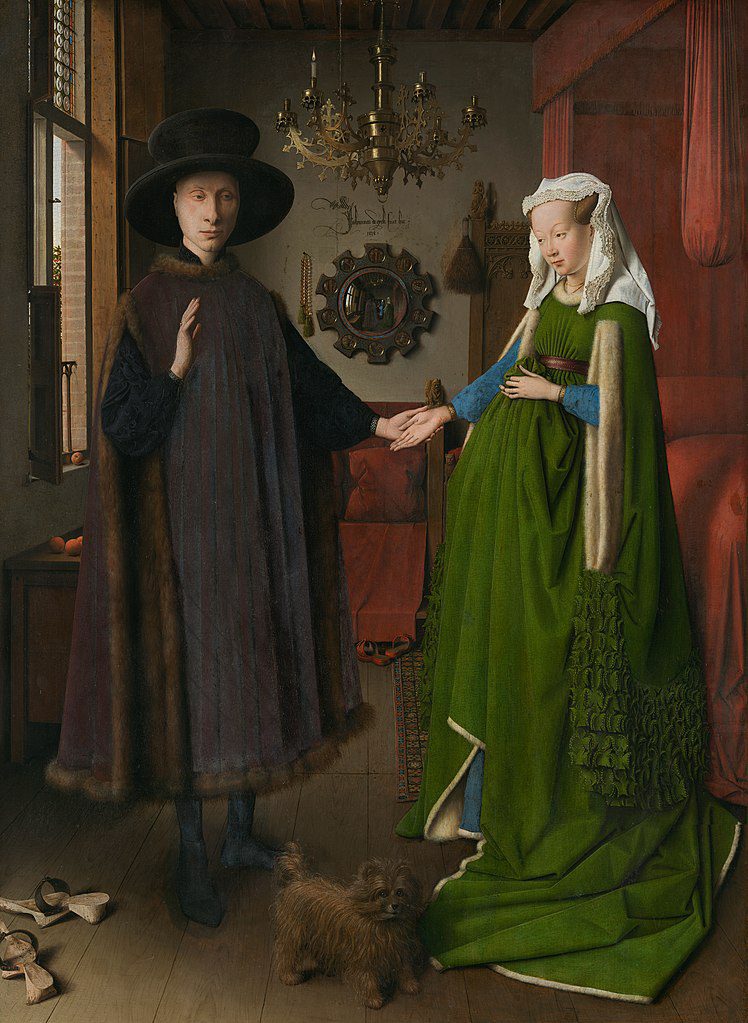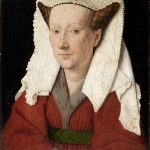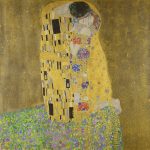
The Arnolfini Portrait, painted in 1434 by the Flemish master Jan van Eyck, is a captivating masterpiece that has puzzled art historians for centuries. This remarkable painting, housed in the National Gallery, London, is renowned for its lifelike detail and mysterious symbolism. From its intricate representation of light to its cryptic objects, every element invites viewers to speculate about its meaning. Was it a marriage portrait, a memorial, or a legal document? This article explores the background, symbolism, and cultural legacy of the Arnolfini Portrait.
The Historical Context of the Arnolfini Portrait
Jan van Eyck, celebrated for his technical brilliance and realism, was a leading artist of the Northern Renaissance. His work thrived under the patronage of the Burgundian court, where he served as a court painter to Philip the Good, Duke of Burgundy. Van Eyck’s mastery of oil painting elevated him to prominence, making him a pivotal figure in the transition from medieval to Renaissance art.
The Arnolfini Portrait was created in Bruges, a bustling city known for its trade and wealth. The subjects of the painting, believed to be Giovanni di Nicolao Arnolfini and his wife, were affluent merchants of Italian descent. The artwork’s acquisition by the National Gallery in 1842 marked a turning point in its recognition, cementing its status as a masterpiece. The painting’s historical context reveals the rich interplay between art, commerce, and patronage in 15th-century Europe.
Who Were the Arnolfinis? Decoding the Subjects
The painting’s primary figures, Giovanni di Nicolao Arnolfini and his wife, stand as symbols of prosperity. Giovanni, a successful merchant, represents the wealth and connections of Italian traders in Bruges. His wife, whose name remains uncertain, appears alongside him in a setting filled with luxury and symbolism.
The exact nature of the scene is debated. Some scholars believe it captures a marriage ceremony, while others suggest it may commemorate a legal agreement or even serve as a memorial portrait. The detailed clothing and surroundings emphasize their social status. Yet, the enigmatic expressions and gestures leave much to interpretation, fueling debates about the subjects’ story.
Jan van Eyck’s Revolutionary Techniques
Jan van Eyck’s innovative techniques transformed the art world. His use of oil paints allowed him to achieve unparalleled detail and realism. In the Arnolfini Portrait, every texture—from the fur-lined robes to the wooden floor—comes to life. This precision showcases van Eyck’s ability to observe and replicate the natural world.
One of the painting’s most striking features is the convex mirror in the background. This small yet powerful detail reflects the couple and two additional figures, possibly witnesses. Above the mirror, van Eyck inscribed the words, “Jan van Eyck was here,” asserting his presence and perhaps his role as a witness to the scene. This signature is both a declaration of authorship and a clever integration into the narrative.
Symbolism in the Arnolfini Portrait
The Arnolfini Portrait is rich with symbolism, each object carefully chosen to convey layered meanings. Key elements include:
- The Dog: Positioned between the couple, the dog symbolizes loyalty and fidelity.
- The Single Lit Candle: Found in the ornate chandelier, it may represent spiritual presence or divine blessing.
- The Mirror: Encircled by scenes of Christ’s Passion, it reflects unseen witnesses, adding a layer of mystery.
The couple’s hand gestures and positioning further suggest themes of unity and partnership. The woman’s voluminous green gown and the man’s dark robe contrast, perhaps signifying balance. These details invite endless interpretations, making the painting a puzzle for the ages.
The Controversy: Is It a Marriage Portrait?
One of the most debated aspects of the Arnolfini Portrait is its purpose. Many scholars argue that it depicts a marriage ceremony, citing the joined hands and the presence of witnesses. The woman’s elaborate dress, potentially a symbol of wealth and fertility, supports this theory.
Others, however, believe the painting serves a different purpose. Some suggest it might document a legal agreement, reflecting the importance of contracts in 15th-century commerce. A third theory posits that it could be a memorial, particularly if the woman depicted had passed away before the painting’s completion. These conflicting interpretations contribute to the enduring allure of the artwork.
The Influence of Renaissance Society on the Portrait
The Arnolfini Portrait provides a window into the values of Renaissance society. Its attention to detail and luxurious objects reflect the importance of wealth and status. The subjects’ attire, including Giovanni’s fur-trimmed cloak and his wife’s fine gown, underscores their prominence.
Religious symbolism is also evident, as seen in the lit candle and the mirror’s devotional imagery. This blending of material and spiritual elements mirrors the era’s dual focus on earthly success and divine grace. Van Eyck’s ability to capture these societal ideals demonstrates his understanding of his patrons’ desires.
The Role of Light and Reflection in the Composition
Van Eyck’s mastery of light and reflection is a hallmark of the Arnolfini Portrait. The painting’s naturalistic rendering of light enhances its realism. Sunlight streams through the window, illuminating the scene and casting soft shadows, creating depth and atmosphere.
The convex mirror is a focal point, offering a secondary perspective. Its reflection reveals details not visible from the main viewpoint, such as the backs of the couple and the witnesses. This ingenious use of reflection adds complexity to the composition and invites viewers to look closer, uncovering hidden layers of meaning.
The Arnolfini Portrait in Modern Pop Culture
The Arnolfini Portrait continues to inspire contemporary culture. It has appeared in films, literature, and advertisements, symbolizing intrigue and sophistication. Its mirror, often cited as one of art history’s most famous reflective surfaces, is a recurring motif in discussions of perspective and symbolism.
Artists and scholars draw inspiration from van Eyck’s meticulous techniques and enigmatic narrative. The painting’s presence in popular media reflects its status as an enduring cultural icon, bridging the gap between Renaissance art and modern creativity.
Why the Arnolfini Portrait Remains a Mystery
Despite extensive analysis, the Arnolfini Portrait retains its enigmatic quality. The lack of definitive documentation about its purpose leaves room for speculation. Its ambiguous symbols and multi-layered narrative ensure it continues to captivate viewers.
The painting’s appeal lies in its ability to generate questions rather than provide answers. Was it a celebration of marriage, a memorial, or a business agreement? These mysteries, combined with van Eyck’s technical brilliance, make the Arnolfini Portrait a timeless masterpiece.
Key Takeaways
- The Arnolfini Portrait is a masterpiece by Jan van Eyck, celebrated for its detail and symbolism.
- It depicts Giovanni di Nicolao Arnolfini and his wife, though the scene’s exact purpose remains debated.
- The painting showcases van Eyck’s innovative techniques, particularly in his use of oil paints and light.
- Its layered symbolism and unresolved mysteries continue to fascinate art historians and the public alike.
FAQs
What is the Arnolfini Portrait?
The Arnolfini Portrait is a painting by Jan van Eyck, created in 1434, depicting a wealthy couple in a richly detailed interior.
Why is the Arnolfini Portrait famous?
The painting is renowned for its intricate detail, innovative use of oil paints, and enigmatic symbolism.
What does the Arnolfini Portrait symbolize?
It symbolizes themes of wealth, fidelity, and spirituality, with objects like the dog and mirror carrying layered meanings.
Where is the Arnolfini Portrait displayed today?
The painting is part of the collection at the National Gallery, London.
Who painted the Arnolfini Portrait?
The Flemish artist Jan van Eyck painted the Arnolfini Portrait in 1434.




